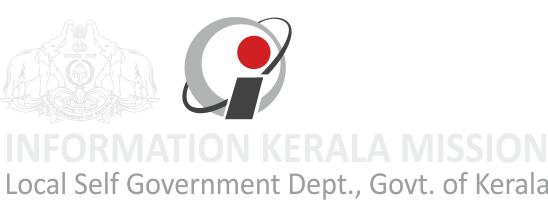The realisation that an ICT intervention heading for a substantial impact on the local body systems should involve computerisation of revenue and accounting, expedited the development of software applications on these two areas - the most significant aspects of functioning of local bodies from a human resource management and financial management point of view. This approach tantamount to "catching the bull by the horn" was ingrained in the IKM strategy for developing an integrated financial management application namely 'Sanchaya'. A rigorous interdisciplinary effort in system design, addressing various facets of the application development namely, possible hurdles in legacy data handling, likely gaps in information due to inappropriate book keeping, divergences in practices across local bodies, problems arising out of the changes in policy frame work and related change management, requirements emerging from work flow integration, efforts in building up integrated result based management mechanisms including human resource management, improvements in tax collection, prevention of tax evasion, tax mapping etc, and devising an arrangement for an effective management information reporting etc was tried out. This was how Sanchaya emerged. Eighty different sources of revenue in local bodies were listed out and an all-encompassing yet generic and normative model for the base engine was worked out through meticulous deliberations. The model was so overwhelmingly parameterised that it could incorporate all aspects of the business rules be it from the central act, the state act, rules or bye laws established by the local bodies, or decisions following recommendations of the State Finance Commission. The Mission geared up itself towards the development of this application, so as to complete its implementation at the earliest. Undoubtedly, this could take the local bodies far ahead in enhancing their revenue collection as well as in managing their human resources more prudently. Integration of Sanchaya with the application package for monitoring the workflow- Soochika- had been on the anvil, for quite some time. An integrated application structure linking Sanchaya and Soochika was envisaged which was assigned an epithet 'San-Soo'. The systems modelling and documentation of San-Soo involved nearly six IKM man-years. The volume of systems documentation built up, the decision charts created to represent the business logics and the flow charts representing the interface and transaction logics were so unwieldy that undertaking the application development as an integrated whole giving due consideration to all the intrinsic interconnections and the finesse on the one hand and managing the software engineering aspects on the other without the aid of a tool was a near impossibility. Further, the projected resource requirements for the development work could almost eat away the entire development team and the lead times for completing the software development life cycle would be also substantial. Given the deviations in book keeping and practices in local bodies and the complexities involved, the customisation requirements would be far beyond the reach and competence of the team and there was always the risk of non implementation. After detailed deliberations the team decided not to be over ambitious. For further refinement and enrichment of the application, the revenue application structure shall be logically broken down into component modules, and full-fledged implementation tried out independently for the relatively intricate modules like Property Tax, Profession Tax, Entertainment Tax, Licensing of Dangerous and Offensive Trades, Licensing of Prevention of Food Adulteration etc., and relative simpler ones like Direct Collections, Grants, Show Tax, and Auctions etc could be handled together as an assortment. The San-Soo integration would be taken up once the finer details at the unit levels are sorted out. However the unit building, testing and implementation shall be carried out keeping in view the big picture of integration in various aspects of financial management, human resource management and information management.
Reforming the existing single entry - cash based accounting system into a double entry - accrual based mercantile accounting system had been debated for long in the local body context. The advantages of going in for a double entry based system include the following: (i) the reformed system would fully reflect the financial position of the local bodies and would also reveal the assets and liabilities created (ii) it would clearly indicate the resources that the local body could mobilise. However, the constraints emerging would be: (i) the changes required in the accounts manual are extensive and the change management is therefore tedious (ii) the enormity of the capability building required for the personnel in the local bodies, given their profile. It would be practical to focus on an accounts re-organisation, which looks at purely functional aspects rather than conceptual aspects. A reorganisation plan centred on computerisation of accounts has gained acceptance. If the accounts application design could retain the appearance of the primary records, and the accounts engine could still be double entry, the reports being double entry based, the immediate requirements could be met with. This precisely had been the object of Saankhya application development. A pilot application for Saankhya has been worked out based on a collective scrutiny of the various designs available. However, the currently available designs don't fully reflect the intricacies of the plan accounting system. This could render the process of plugging the existing holes in the plan monitoring system even more complicated. A comprehensive scheme of account heads incorporating all the aspects of current local body accounting, norms for valuation of assets and calculation of depreciation are yet to be arrived at. A practical approach to linking and cross validating local body accounts with the treasury records, complete integration of accounting systems in the implementation offices with the accounting systems in the local body core and for relating the local body budget with the accounts is also yet to be evolved and tried out. Last but not the least, conformity with the Technical Guide on Accounting and Financial Management of urban local bodies and different account standards of Institutions of Chartered Accounts of India (ICAI) and Governmental Accounting Standards Board (GASB) -34 is also desirable if not a necessity.
